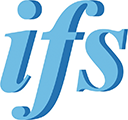
![[Translate to English:] [Translate to English:]](/fileadmin/_processed_/c/6/csm_QSEAL_Titelbild_6fceab334a.png)
The joining of aluminium die casting materials is possible with the aid of a wide variety of manufacturing processes such as adhesive bonding, mechanical joining and fusion welding. Fusion welding processes are particularly characterized by a high degree of automation, short process times and a low weight of the joint. However, the welding processing of aluminium die casting materials is associated with various challenges. For example, numerous publications have identified hydrogen-induced metallurgical pore formation and the occurrence of flashes and molten pool ejections as key challenges. The occurrence of these defects is usually irregular and strongly dependent on the varying material quality. One reason for the fluctuations in material quality is the large number of influencing factors, such as hydrogen content, composition of the release agent and its concentration, as well as the design of the die casting die for the finished die cast product.
As a result of the imperfections that occur during the welding of aluminium die castings, especially during the seal welding of housing components, high scrap rates and high costs for necessary reworking are generated. At the same time, the ecological footprint of the assemblies deteriorates. Only if the risk of rejects can be reduced by reliably predicting the weldability can the economic potential of the welding task be fully exploited.
The aim of the project is to systematically analyze and quantify the interdependencies between the die casting quality (input variable) and the welding result (output variable). The project is based on the working hypothesis that there is a quantifiable correlation between various easily determined variables from the die casting process (e. g. release agent, density index), its numerical simulation and the welding result of statistically validated test welds. It is further assumed that modern multivariate data analysis techniques can be used to identify significant main effects on weldability and quantify correlations between input and output variables. It is further hypothesized that the causes of weld defects, particularly flashes, can be distinguished into a portion that can be controlled by casting or welding engineering measures and a random portion. The project aims to identify and minimize the controllable portion on the casting and welding side.